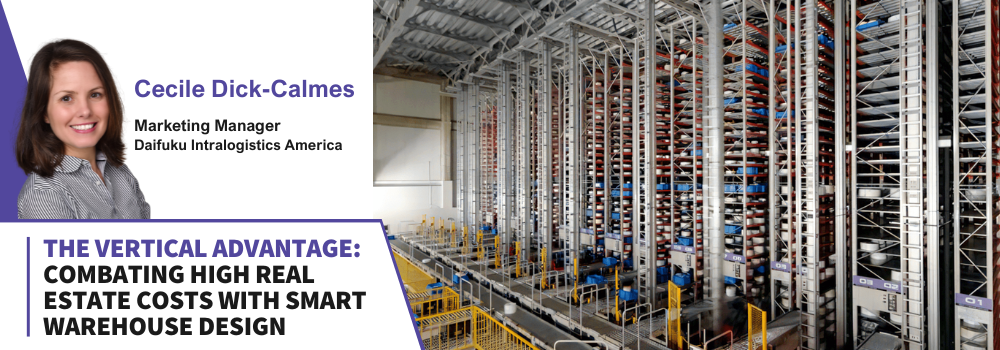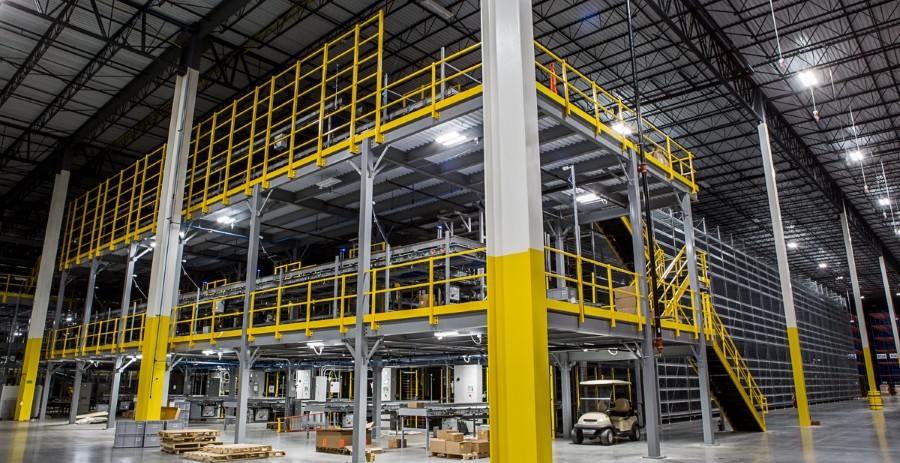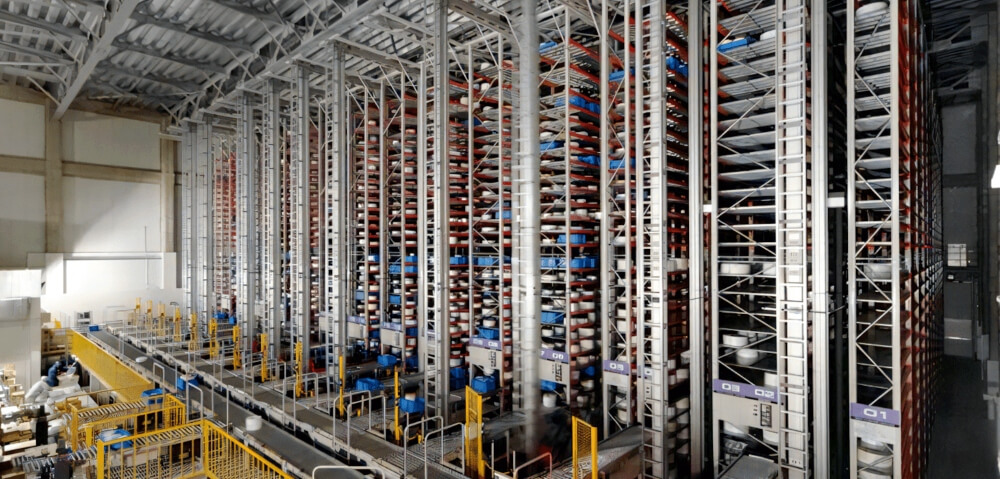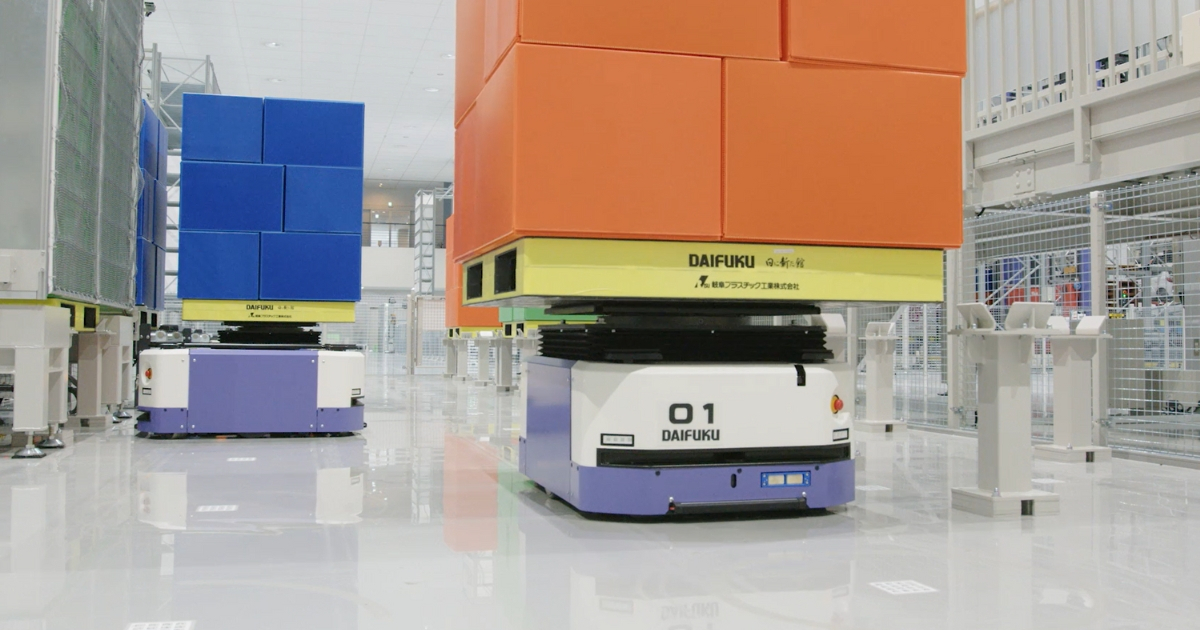Der vertikale Vorteil: Hohe Immobilienkosten durch intelligentes Lagerdesign bekämpfen

Als die Bevölkerung in den Städten stark anstieg und Platz knapp wurde, reagierten Bauunternehmer mit dem Bau in die Höhe. Wolkenkratzer und Hochhäuser wurden zur Norm, veränderten die Skylines der Städte und ermöglichten eine effizientere Nutzung begrenzter Flächen. Das Ergebnis? Größere wirtschaftliche Chancen und ein höheres Ansehen für Unternehmen und Einwohner gleichermaßen.
Was hat das alles mit modernen Lagerhallen zu tun? Ganz einfach: Angesichts steigender Immobilienpreise und Grundstücksknappheit in der Nähe von Ballungszentren in den USA folgen Lagerhallenbetreiber dem Beispiel vieler Stadtentwickler. Es ist günstiger und praktikabler, in die Höhe zu bauen, als mehr Lagerfläche zu erwerben und diese dann auszuweiten. Zu den Vorteilen zählen eine optimale Flächenausnutzung und ein höherer Durchsatz.
Lesen Sie weiter, um mehr darüber zu erfahren, wie die aktuellen Marktbedingungen in den USA zu einem vertikalen Boom in der Lagerhaltung führen, und entdecken Sie einige der Lösungen, die Managern dabei helfen, den verfügbaren Platz effizient zu maximieren.
Immobilienkosten und Platzbeschränkungen

Die knappe Auslastung und die steigenden Arbeitskosten in den USA haben die Lagermieten stetig in die Höhe getrieben. Branchenberichte zeigen einen Anstieg der Mieten von 7,96 US-Dollar pro Quadratfuß im Jahr 2022 auf über 8,30 US-Dollar im Jahr 2024 (*1), ohne Anzeichen einer Verlangsamung. Gleichzeitig hat die Grundstücksknappheit in der Nähe von Ballungszentren die Leerstandsquoten für Lagerhallen unter 100.000 Quadratfuß auf ein Rekordtief gedrückt. Dadurch werden kleine bis mittelgroße Lagerhallen immer seltener und wertvoller, was Unternehmen dazu zwingt, das Potenzial ihrer bestehenden Anlagen voll auszuschöpfen.
Steigende Betriebskosten und sinkende Gewinnmargen führen dazu, dass Lagermanager zunehmend unter Druck geraten. Die Unsicherheit durch die US-Zölle hat den Welthandel beeinträchtigt und viele Unternehmen dazu veranlasst, Lagerbestände als Puffer gegen schwankende Kosten zu horten. Die Rentabilität ist bereits gesunken – von 10,58 % im Jahr 2022 auf 9,37 % im Jahr 2024 (*2)– und dürfte weiter sinken, wenn keine mutigen Maßnahmen ergriffen werden.
Dies alles unterstreicht die Notwendigkeit, in die Höhe zu bauen und jeden Quadratmeter optimal zu nutzen.
Vertikale Automatisierung und intelligentes Wachstum
Wie maximieren Sie Lagerfläche und optimieren gleichzeitig Arbeitsaufwand und Durchsatz in Ihrem Lager? Von der Integration von Multi-Ebenen-Fachbodenanlagen bis hin zu automatisierten Lagersystemen und vielem mehr gibt es eine Reihe von Lösungen, die dazu beitragen können, steigende Immobilienkosten und Personalprobleme zu kompensieren – indem Sie die vorhandene Lagerfläche maximieren und die Produktivität in vorhandenen Räumlichkeiten optimieren.
Sehen wir uns einige dieser Lösungen an.
Multi-Ebenen-Fachbodenanlagen

Multi-Ebenen-Fachbodenanlagen können die Lagerkapazität erheblich steigern – oft um bis zu 50 %, in manchen Fällen können sie die verfügbare Lagerfläche sogar verdreifachen.
Mezzanine erweitern ein Lager um eine weitere Ebene. Betrachten Sie sie als zweites Stockwerk in Ihrer Anlage, das hilft, den vertikalen Raum zwischen Erdgeschoss und Lagerdecke zu nutzen. Sie können als zusätzliche Lagerebene dienen und die Lagerkapazität auf gleicher Grundfläche erweitern. Mezzanine können aber auch mit Bürobereichen, Kommissionier- und Verpackungsbereichen und vielem mehr ausgestattet werden, um ein Lager organisiert und effizient zu halten.
Der Ausbau von Zwischengeschossen ist zudem deutlich kostengünstiger als die Anschaffung weiterer Lagerflächen. Sie sind zudem flexibel und können an aktuelle Lagerflächen und -anforderungen angepasst und bei Veränderungen problemlos neu konfiguriert werden.
Mehr erfahren: Strukturelle Lösungen
Pick Towers
Kommissioniertürme sind mehrstöckige Lagerstrukturen, die die Kommissioniereffizienz steigern und die Lagerkapazität maximieren. Da Lagerkapazität und -effizienz zwei Schlüsselfaktoren sind, die Lagermanager zur Erreichung ihrer Gewinnziele berücksichtigen müssen, können diese Lösungen in modernen Anlagen einen großen Unterschied machen.
Kommissioniertürme bestehen oft aus mehreren vertikal gestapelten Regalebenen und Kommissionierstationen. Sie lassen sich zudem problemlos mit Förderbändern und automatisierter Kommissioniertechnik ausstatten, um den Lagerbetrieb weiter zu optimieren.
Mehr erfahren: Strukturelle Lösungen
Automatisierte Lagersysteme

Da Lagermanager eher nach oben als nach außen bauen, haben sich automatisierte Lager- und Bereitstellungssysteme (Regalbediengerät) als Eckpfeiler der vertikalen Optimierung etabliert. Diese Systeme maximieren die Lagerdichte, optimieren Abläufe und verbessern die Sicherheit – und das alles auf kompaktem Raum.
Unter Regalbediengerät-Lösungen sind Unit-Load- und Mini-Load-Systeme die bekanntesten. Unit-Load-Systeme sind für den Umgang mit großen, palettierten Gütern ausgelegt und können beeindruckende Höhen von bis zu 40 Metern erreichen – deutlich mehr als herkömmliche Regal- und Gabelstaplersysteme. Dadurch eignen sie sich ideal für die Lagerung mit hoher Dichte. Mini-Load-Systeme hingegen sind auf kleinere Artikel wie Kisten und Behälter zugeschnitten und bieten hohe Auslagerungsgeschwindigkeiten, die insbesondere bei Kommissioniervorgängen hohe Durchsatzraten ermöglichen.
Beide Systeme ermöglichen mehrstöckige Kommissionierstationen, die auf die Regalhöhen abgestimmt sind. So können Bediener effizient auf Lagerbestände zugreifen, ohne lange Strecken zurücklegen oder in engen Räumen auf Gabelstapler angewiesen sein zu müssen. Dies steigert nicht nur die Produktivität, sondern reduziert auch das Risiko von Arbeitsunfällen durch die Minimierung des Verkehrsaufkommens in dichten Lagerzonen.
Erfahren Sie mehr: Automatisierte Lagerlösungen
Autonome mobile Roboter und fahrerlose Transportfahrzeuge

Autonome mobile Roboter (AMRs) und fahrerlose Transportfahrzeuge (AGVs) sind zwar nicht vertikal, aber intelligente Lösungen, die für die Effizienz moderner Lager unerlässlich sind. Diese mobilen Systeme automatisieren Routineaufgaben, reduzieren manuelle Arbeit und unterstützen skalierbare, reaktionsschnelle Abläufe – intelligentes Wachstum.
AMRs nutzen Sensoren, Kameras und Navigationsalgorithmen, um Routen zu planen und Hindernissen in Echtzeit auszuweichen – ohne feste Infrastruktur. AGVs sind zwar typischerweise auf vordefinierte Routen angewiesen, bieten aber zuverlässige Leistung für wiederkehrende Transportaufgaben vor Ort.
Beide sind leicht skalierbar, sodass Erweiterungen mit minimaler Unterbrechung durchgeführt werden können – ideal für wachsende oder saisonale Betriebe.
Die Antworten sind klar
Automatisierte Lagerlösungen, insbesondere solche mit vertikaler Expansion und hochverdichteter Lagerung, werden bis 2029 voraussichtlich jährlich um bis zu 15 Prozent wachsen (*3). Dieses Wachstum spiegelt den zunehmenden Nutzen dieser Lösungen bei der Bewältigung zentraler Herausforderungen für Lagermanager wider.
Von Zwischengeschossen bis hin zu vertikal leistungsfähigen Systemen wie Kommissioniertürmen, Regalbediengerät Lösungen und skalierbaren Technologien wie AMRs und AGV können Lager von heute jeden Zentimeter nutzbaren Raums besser ausnutzen und ihre Einrichtungen zukunftssicher für sich entwickelnde Marktsituationen und Anforderungen machen.
Bereit, Ihr Lager zu optimieren?
Sprechen Sie mit unseren Daifuku-Experten, um maßgeschneiderte Automatisierungslösungen für Ihre Räumlichkeiten zu entdecken. Wenn Sie in den USA ansässig sind, wenden Sie sich an unser Team von Daifuku Intralogistics America. Bei Anfragen aus anderen Teilen der Welt helfen Ihnen unsere globalen Experten gerne weiter. Entdecken Sie, wie Sie Ihre Produktivität steigern, den Platz – sowohl vertikal als auch horizontal – maximieren und neue Effizienzen erschließen können – unterstützt durch jahrzehntelange Daifuku-Erfahrung.
Cecile Dick-Calmes

Marketingmanager, Daifuku Intralogistics America
Cecile ist Marketing- und Kommunikationsstrategin mit über zehn Jahren Erfahrung in den Bereichen digitales Marketing, Thought Leadership und Webentwicklung. Seit 2021 ist sie Marketingmanagerin bei Daifuku Intralogistics America und leitet dort die zielgerichtete Kommunikation zur Unterstützung des Unternehmenswachstums und der Umsatzsteigerung.
Sie verfügt über einen Doppelmasterabschluss in Marketing und Kommunikation der ISCOM Paris und einen MBA in International Business der Leonard de Vinci School of Management. Cecile erwarb außerdem Zertifikate in digitalen Marketingstrategien der Northwestern University – Kellogg School of Management und in Datenanalyse der London School of Economics and Political Science (LSE).
